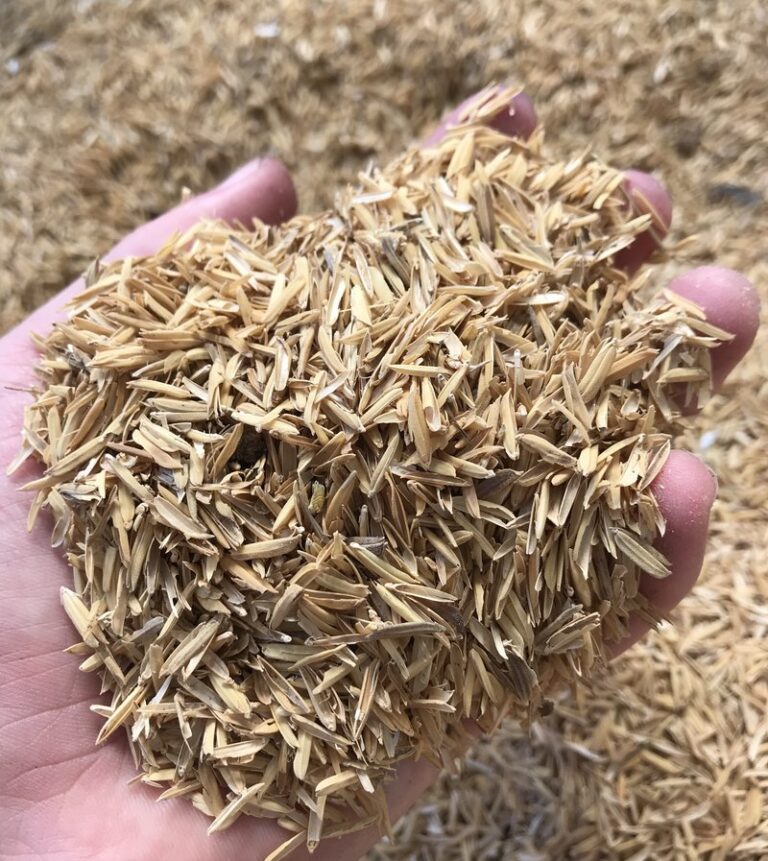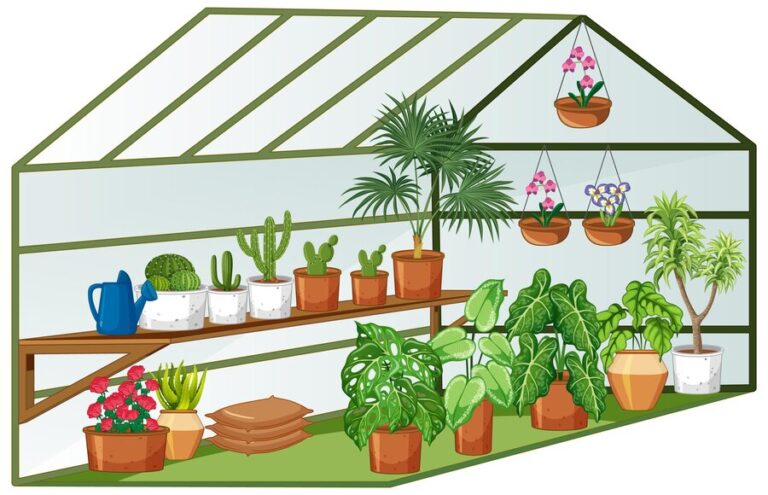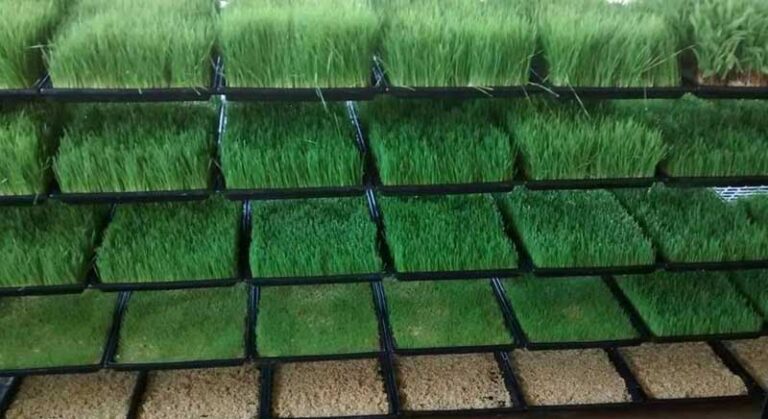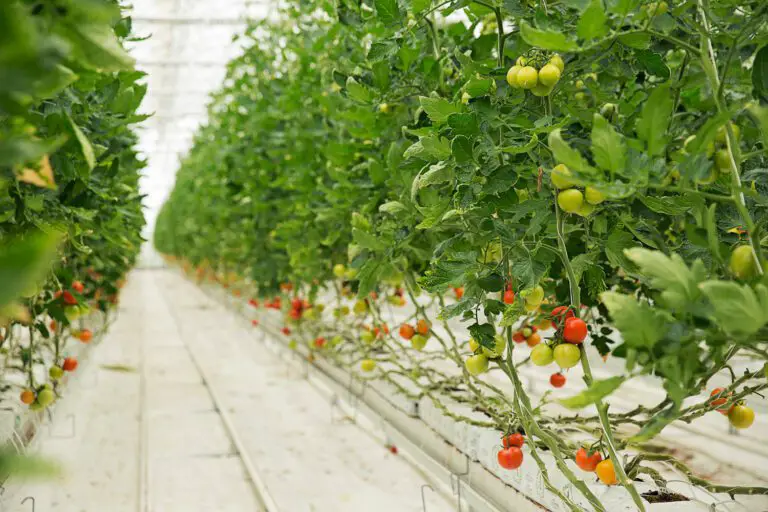Top 10 Benefits of Hydroponics You Need to Know
Table of Contents
Benefits of Hydroponics: Why It’s Worth Exploring
Increased Crop Yield:
Hydroponics, a soil-less farming technique, offers numerous benefits that make it worth exploring for gardening enthusiasts. One of the key advantages of hydroponics is its ability to significantly increase crop yields compared to traditional soil-based farming methods. By providing optimum control over environmental factors such as water, light, and nutrients, hydroponic systems create an ideal growing environment for plants. This leads to enhanced plant growth, healthier root development, and ultimately, higher yields. A study conducted by researchers at the University of Arizona found that crop yields in hydroponic systems can be up to 40% higher than those in traditional soil-based agriculture. This improved productivity not only ensures a plentiful supply of fresh produce but also makes hydroponics a viable solution for addressing global food security challenges.
• Hydroponics significantly increases crop yields compared to traditional soil-based farming methods
• Optimum control over environmental factors such as water, light, and nutrients creates an ideal growing environment for plants
• Enhanced plant growth, healthier root development, and ultimately higher yields are achieved through hydroponic systems
• A study conducted by researchers at the University of Arizona found that crop yields in hydroponic systems can be up to 40% higher than those in traditional soil-based agriculture
• Improved productivity ensures a plentiful supply of fresh produce
• Hydroponics is a viable solution for addressing global food security challenges.

1) Increased Crop Yield: Hydroponics allows for optimum control over environmental factors such as water, light, and nutrients, resulting in significantly higher crop yields compared to traditional soil-based farming methods.
Hydroponics, a modern method of farming, offers several benefits when it comes to crop yield. One of the key advantages of hydroponics is the ability to have optimum control over environmental factors, such as water, light, and nutrients. Unlike traditional soil-based farming methods, where these factors are relatively unpredictable, hydroponics allows for precise regulation, resulting in significantly higher crop yields.
In hydroponic systems, plants are grown in a nutrient-rich water solution, eliminating the need for soil. This eliminates the risk of nutrient deficiencies or imbalances that can hinder plant growth. By providing plants with the perfect balance of essential elements, hydroponic farmers can optimize their growth potential. This leads to faster and healthier plant development, ultimately resulting in increased crop yields.
Additionally, hydroponic systems can be tailored to specific plant requirements. Whether it’s adjusting the water pH, providing an optimal light spectrum, or customizing nutrient concentrations, hydroponics allows for precise fine-tuning to meet the exact needs of the plants being grown. This level of control ensures that crops receive the ideal conditions for growth, leading to maximized yields.
By harnessing the power of hydroponics, farmers and gardeners can unlock the potential for higher crop yields, paving the way for a more sustainable and efficient agricultural future.
• Hydroponics allows for optimum control over environmental factors such as water, light, and nutrients
• Precise regulation in hydroponics leads to significantly higher crop yields compared to traditional soil-based farming methods
• Nutrient deficiencies or imbalances are eliminated in hydroponic systems, promoting faster and healthier plant development
• Hydroponic systems can be tailored to specific plant requirements, allowing for precise fine-tuning of water pH, light spectrum, and nutrient concentrations
• The level of control in hydroponics ensures that crops receive ideal conditions for growth, resulting in maximized yields
• Hydroponics offers a more sustainable and efficient agricultural future by unlocking the potential for higher crop yields.
2) Water Efficiency: Hydroponic systems use up to 90% less water compared to conventional agriculture, making it a sustainable solution for regions facing water scarcity.
Hydroponic systems offer a remarkable solution to the ever-growing problem of water scarcity in many regions. Compared to traditional agriculture methods, hydroponics utilizes up to 90% less water, making it an incredibly water-efficient approach. This efficiency stems from the precise control over water delivery and recycling within the system, ensuring that plants receive just the right amount of hydration without any wastage. Not only does this significantly reduce water consumption, but it also alleviates the strain on water resources, making hydroponics an environmentally sustainable choice.
With water becoming an increasingly limited resource, the adoption of hydroponics can have a profound impact on regions facing water scarcity. In addition to conserving water, this innovative cultivation method can help communities become more self-reliant when it comes to food production. As hydroponics enables individuals to grow crops in urban areas, rooftops, or even small indoor spaces, it offers the possibility of creating self-sustaining gardens in areas where traditional farming is not feasible. By reducing the reliance on external sources and conserving water, hydroponics provides a sustainable and practical solution for communities striving to overcome the challenges of water scarcity while ensuring a consistent supply of fresh produce.
• Hydroponic systems use up to 90% less water compared to conventional agriculture
• Precise control over water delivery and recycling reduces wastage
• Alleviates strain on water resources, making it an environmentally sustainable choice
• Adoption of hydroponics can have a profound impact on regions facing water scarcity
• Enables individuals to grow crops in urban areas, rooftops, or small indoor spaces
• Offers the possibility of creating self-sustaining gardens where traditional farming is not feasible
• Reduces reliance on external sources and ensures a consistent supply of fresh produce

3) Space Utilization: Hydroponic systems can be set up vertically, maximizing space utilization and enabling cultivation in urban areas, rooftops, or small indoor spaces.
Hydroponic systems offer a revolutionary approach to cultivation, particularly in urban areas, rooftops, and small indoor spaces where land is scarce. One of the key advantages of hydroponics is the ability to set up the system vertically, maximizing space utilization and creating a compact yet efficient growing environment.
Vertical hydroponic systems allow plants to be stacked on top of each other, creating a multi-tiered structure. By utilizing vertical space, gardeners can grow a larger number of plants in a smaller footprint, making it an ideal solution for urban gardening. This enables individuals living in apartments or areas with limited outdoor space to grow their own fresh produce.
Additionally, rooftop gardens can be transformed into thriving hydroponic setups, turning idle spaces into productive green zones. The ability to utilize unused areas in buildings for cultivation not only helps in maximizing space but also contributes to enhancing the sustainability and aesthetic appeal of urban landscapes.
Furthermore, the compact nature of hydroponic systems makes it possible to grow plants indoors, even in the smallest spaces. This opens up opportunities for individuals who lack access to arable land or face climatic limitations. With indoor hydroponics, enthusiasts can cultivate a wide range of crops, including leafy greens, herbs, and even small-fruited plants like tomatoes or peppers.
By taking advantage of vertical space, hydroponic systems offer a practical and innovative solution to optimize space utilization for cultivation in urban areas, rooftops, and small indoor spaces. As gardening enthusiasts explore these possibilities, the potential for transforming seemingly limited areas into thriving green spaces becomes increasingly evident.
| Key Points | Implications/Advantages |
|---|---|
| Vertical hydroponic systems allow stacking plants, maximizing space | – Efficient use of limited space in urban areas and small indoor spaces |
| Particularly beneficial in urban areas, rooftops, and small spaces | – Enables cultivation in areas with scarce land resources |
| Hydroponics enables growing produce in apartments and limited spaces | – Individuals in confined spaces can grow fresh produce |
| Rooftop gardens can be transformed into productive hydroponic setups | – Enhances sustainability and aesthetic appeal of urban spaces |
| Compact hydroponic systems for indoor cultivation in small spaces | – Indoor cultivation in the smallest spaces becomes possible |
| Indoor hydroponics allows cultivation of various crops | – Wide range of crops, including leafy greens and herbs, can be grown |
| Utilizing vertical space optimizes space utilization | – Efficient use of space for cultivation in different settings |
This table provides a concise overview of the advantages of vertical hydroponic systems in terms of maximizing space utilization, especially in urban and small indoor spaces, showcasing their potential for transforming various environments into productive and sustainable growing spaces.
4) Year-Round Cultivation: Unlike traditional farming, hydroponics allows for year-round cultivation, eliminating seasonal limitations and ensuring a consistent supply of fresh produce irrespective of the weather.
Hydroponics offers a groundbreaking solution to overcome the limitations of traditional farming methods, namely, the constraint of seasonal cultivation. Unlike conventional agriculture, hydroponics enables year-round cultivation, allowing for a consistent supply of fresh produce irrespective of the weather. This significant advantage is achieved through a carefully controlled environment that eliminates the dependence on natural factors such as sunlight and climate conditions.
In hydroponic systems, plants are grown in a soilless medium, such as nutrient-enriched water or inert materials like coconut coir or perlite. By providing optimal lighting, nutrient levels, and temperature, hydroponics creates an ideal growth environment that fulfills the needs of plants throughout the year. With this level of control, hydroponics breaks free from the constraints imposed by seasonal variations, ensuring a steady and uninterrupted production of crops.
This year-round cultivation not only guarantees a continuous supply of fresh produce but also offers numerous benefits for farmers, consumers, and the environment. Farmers can diversify their crops and meet the demands of the market without being limited by the constraints of natural seasons. Similarly, consumers can enjoy a wider variety of fresh fruits, vegetables, and herbs, regardless of the time of year. Moreover, the environmental benefits of hydroponics, such as reduced water usage and minimized use of harmful chemicals, contribute to a more sustainable and ecologically conscious approach to agriculture.
• Hydroponics enables year-round cultivation, eliminating seasonal limitations.
• Consistent supply of fresh produce regardless of weather conditions.
• Controlled environment eliminates dependence on natural factors like sunlight and climate.
• Plants grown in soilless medium with optimal lighting, nutrients, and temperature.
• Steady and uninterrupted production of crops throughout the year.
• Diversification of crops for farmers and meeting market demands.
• Consumers can enjoy a wider variety of fresh fruits, vegetables, and herbs at any time.
• Environmental benefits include reduced water usage and minimized use of harmful chemicals.

5) Reduced Pests and Diseases: By eliminating soil, hydroponic systems minimize the risk of pests, diseases, and weeds, reducing the need for harmful pesticides and herbicides.
Hydroponic systems offer a unique advantage when it comes to pest and disease management. By eliminating the need for soil, these systems minimize the risk of pests, diseases, and weeds that are commonly associated with traditional farming methods. Without soil as a medium, many pests and diseases that thrive in the soil are unable to establish themselves in hydroponic setups.
This reduction in pests and diseases not only minimizes the threat to the plants but also decreases the need for harmful pesticides and herbicides. Traditional farming often relies heavily on chemical interventions to combat pests and diseases, which can have detrimental effects on both human health and the environment. With hydroponics, the need for such interventions is significantly reduced, leading to cleaner and safer agricultural practices.
Without the presence of soil, hydroponic systems disrupt the life cycles of many pests and diseases, making it difficult for them to survive and propagate. Additionally, the controlled environment of hydroponics allows for precise monitoring and adjustment of factors such as temperature, humidity, and nutrient levels. This level of control further minimizes the conditions favorable to pests and diseases, creating an inhospitable environment for their growth and spread.
By adopting hydroponic systems, gardening enthusiasts can enjoy the benefits of reduced pests and diseases, resulting in healthier and more resilient plants. As we continue to explore the many advantages of hydroponics, it becomes clear that this innovative approach to farming has the potential to revolutionize agriculture and provide sustainable solutions for future food production.
| Key Points | Implications/Advantages |
|---|---|
| Hydroponic systems minimize the risk of pests, diseases, and weeds | – No soil as a medium prevents establishment of soil-borne pests and diseases |
| Without soil, pests and diseases that thrive in soil cannot establish | – Reduction in the need for harmful pesticides and herbicides |
| Reduction in pests and diseases decreases the need for chemicals | – Minimizes detrimental effects on human health and the environment |
| Chemical interventions in traditional farming can be harmful | – Disruption of life cycles of pests and diseases in hydroponics |
| Hydroponics disrupts life cycles, making it difficult for pests | – Precise monitoring and adjustment in controlled environments |
| Controlled environment allows for precise monitoring and adjustment | – Inhospitable conditions for pest growth in hydroponic setups |
| Hydroponics creates an inhospitable environment for pest growth | – Resulting in healthier plants |
| Reduced pests and diseases result in healthier plants | – Potential for revolutionizing agriculture for sustainable food production |
| Hydroponics has the potential to revolutionize agriculture |
This table provides a concise overview of the advantages of hydroponic systems in terms of pest and disease control, highlighting their potential to revolutionize agriculture for sustainable food production.
6) Faster Growth: With precise control over nutrient delivery, hydroponics accelerates plant growth, resulting in shorter crop cycles and quicker harvests.
Faster growth is one of the many benefits that hydroponics offers to gardening enthusiasts. With precise control over nutrient delivery, hydroponic systems can accelerate plant growth, resulting in shorter crop cycles and quicker harvests. By providing plants with the exact nutrients they need, when they need them, hydroponic gardens can optimize their growth potential.
Traditional soil-based farming methods often rely on the natural nutrient content of the soil, which can vary and may not always meet the plants’ nutritional requirements. In hydroponics, however, the nutrient solution is carefully formulated to provide plants with an ideal balance of essential elements. This allows the plants to uptake nutrients more efficiently, leading to faster growth rates.
Scientific studies have demonstrated the impressive growth rates achieved with hydroponics. For example, a study published in the Journal of Plant Nutrition and Soil Science found that lettuce plants grown hydroponically had a significantly higher growth rate compared to those grown in soil. The researchers attributed this faster growth to the precise control over nutrient delivery in hydroponics.
Moreover, hydroponic systems promote optimal conditions for plant growth, such as consistent moisture levels, optimal pH, and controlled light exposure. These factors further contribute to accelerated growth and allow for quicker harvests.
In conclusion, hydroponics offers gardening enthusiasts the advantage of faster growth rates, leading to shorter crop cycles and quicker harvests. With precise control over nutrient delivery, plants can thrive and reach their full growth potential in hydroponic systems. This benefit, along with others such as increased crop yield and reduced pests and diseases, makes hydroponics a worthy exploration for those seeking efficient and productive gardening methods.
• Hydroponics offers faster growth rates compared to traditional soil-based farming methods.
• Precise control over nutrient delivery in hydroponic systems accelerates plant growth.
• Nutrient solutions in hydroponics are carefully formulated to provide plants with an ideal balance of essential elements.
• Scientific studies have shown that lettuce plants grown hydroponically have significantly higher growth rates than those grown in soil.
• Hydroponic systems create optimal conditions for plant growth, such as consistent moisture levels, optimal pH, and controlled light exposure.
• Faster growth rates in hydroponics lead to shorter crop cycles and quicker harvests.

7) Control Over Nutrient Levels: Hydroponics enables precise control over nutrient levels, ensuring plants receive the ideal balance of essential elements
Hydroponics offers a remarkable advantage when it comes to controlling the nutrient levels that plants receive. Unlike traditional soil-based farming methods, hydroponics allows for precise monitoring and adjustment of the essential elements that plants need for optimal growth and development. By maintaining the ideal balance of nutrients, hydroponic systems ensure that plants receive the necessary nourishment throughout their growth cycle.
The ability to control nutrient levels in hydroponics is made possible by the use of nutrient solutions. These solutions consist of carefully balanced mixtures of essential mineral elements, such as nitrogen, phosphorus, and potassium, along with other crucial elements like calcium and magnesium. By administering these nutrient solutions directly to the plant roots, hydroponic systems promote efficient uptake and utilization of nutrients, leading to faster and healthier plant growth.
This level of precision in nutrient control is invaluable for gardening enthusiasts who want to maximize the potential of their plants. By providing the specific nutrients in the right amounts, hydroponics eliminates the guesswork associated with traditional soil-based gardening. Additionally, the ability to adjust nutrient levels allows gardeners to tailor the growing conditions to the specific needs of different plant species, resulting in improved overall health and productivity.
• Hydroponics allows for precise monitoring and adjustment of essential elements
• Nutrient solutions provide carefully balanced mixtures of minerals for optimal growth
• Direct administration to plant roots promotes efficient uptake and utilization of nutrients
• Eliminates guesswork associated with traditional soil-based gardening
• Ability to adjust nutrient levels tailors growing conditions to specific plant needs
• Improves overall health and productivity of plants in hydroponic systems.
How does hydroponics ensure precise control over nutrient levels?
Hydroponics systems allow growers to closely monitor and adjust nutrient levels in the water solution that feeds the plants. This ensures that plants receive the ideal balance of essential elements they need for healthy growth.
Can hydroponics help in regions facing water scarcity?
Yes, hydroponic systems are known for their water efficiency. They use up to 90% less water compared to conventional agriculture, making them a sustainable solution for regions dealing with water scarcity.
What are the advantages of setting up hydroponic systems vertically?
By setting up hydroponic systems vertically, space utilization is maximized. This enables cultivation in urban areas, rooftops, or small indoor spaces where horizontal space may be limited.
Does hydroponics eliminate seasonal limitations in farming?
Yes, hydroponics allows for year-round cultivation. Unlike traditional farming methods that are dependent on seasons, hydroponics eliminates seasonal limitations, ensuring a consistent supply of fresh produce throughout the year.
How does hydroponics reduce the risk of pests and diseases?
Hydroponics eliminates the use of soil, which minimizes the risk of pests, diseases, and weeds. This reduces the need for harmful pesticides and herbicides, making hydroponics a more environmentally friendly farming method.
Does hydroponics result in faster plant growth?
Yes, hydroponics accelerates plant growth due to the precise control over nutrient delivery. This results in shorter crop cycles and quicker harvests compared to traditional soil-based farming methods.
What makes hydroponics suitable for ensuring plants receive the ideal balance of essential elements?
Hydroponics enables precise control over nutrient levels in the water solution, allowing growers to adjust and maintain the ideal balance of essential elements needed for optimal plant growth.

Beck Wakeford is a dedicated writer at SouthElMonteHydroponics, with a fervent enthusiasm for agriculture and technological innovation. Armed with a degree in Agricultural Engineering from a leading university, Beck specializes in hydroponic systems design, automation, and optimization. Their passion for merging traditional farming with cutting-edge technology drives them to explore novel solutions for sustainable food production. Beck’s expertise and keen interest in the intersection of engineering and agriculture make them a valuable asset in the quest for efficient and eco-friendly farming practices. Through their writing, Beck aims to inspire others to embrace the potential of hydroponics in shaping a more sustainable future.







